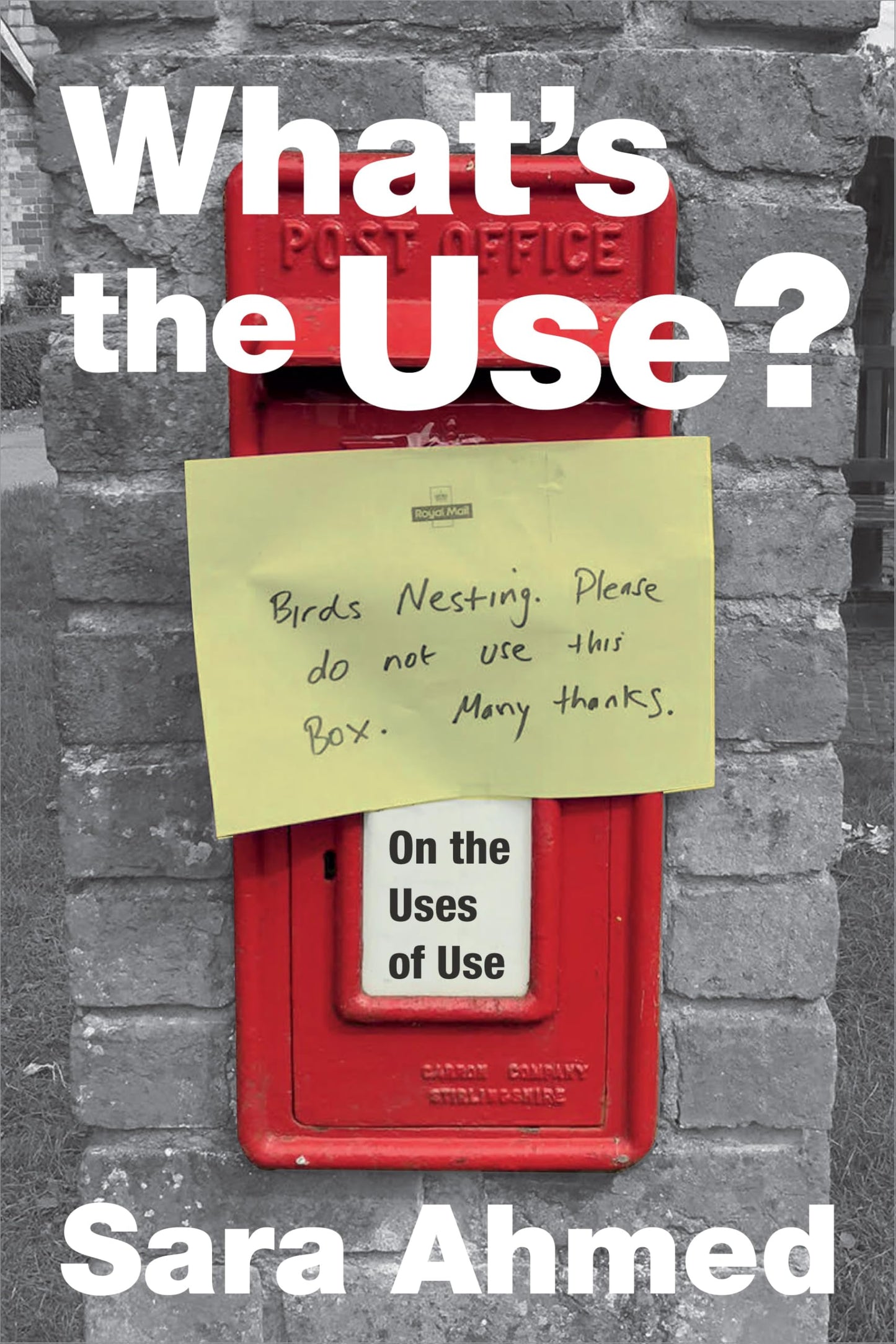Duke University Press Books
What's the Use?: On the Uses of Use
Regular price
$27.95 USD
Regular price
Sale price
$27.95 USD
Unit price
per
Shipping calculated at checkout.
Couldn't load pickup availability
Title: What's the Use?: On the Uses of Use
Author: Sara Ahmed
ISBN: 9781478006503
Publisher: Duke University Press Books
Published: 2019
Binding: Paperback
Language: English
Edition: Illustrated
Condition Note: New from the publisher
Publisher Description: In What's the Use? Sara Ahmed continues the work she began in The Promise of Happiness and Willful Subjects by taking up a single word-in this case, use-and following it around. She shows how use became associated with life and strength in nineteenth-century biological and social thought and considers how utilitarianism offered a set of educational techniques for shaping individuals by directing them toward useful ends. Ahmed also explores how spaces become restricted to some uses and users, with specific reference to universities. She notes, however, the potential for queer use: how things can be used in ways that were not intended or by those for whom they were not intended. Ahmed posits queer use as a way of reanimating the project of diversity work as the ordinary and painstaking task of opening up institutions to those who have historically been excluded.
Author: Sara Ahmed
ISBN: 9781478006503
Publisher: Duke University Press Books
Published: 2019
Binding: Paperback
Language: English
Edition: Illustrated
Condition Note: New from the publisher
Publisher Description: In What's the Use? Sara Ahmed continues the work she began in The Promise of Happiness and Willful Subjects by taking up a single word-in this case, use-and following it around. She shows how use became associated with life and strength in nineteenth-century biological and social thought and considers how utilitarianism offered a set of educational techniques for shaping individuals by directing them toward useful ends. Ahmed also explores how spaces become restricted to some uses and users, with specific reference to universities. She notes, however, the potential for queer use: how things can be used in ways that were not intended or by those for whom they were not intended. Ahmed posits queer use as a way of reanimating the project of diversity work as the ordinary and painstaking task of opening up institutions to those who have historically been excluded.

